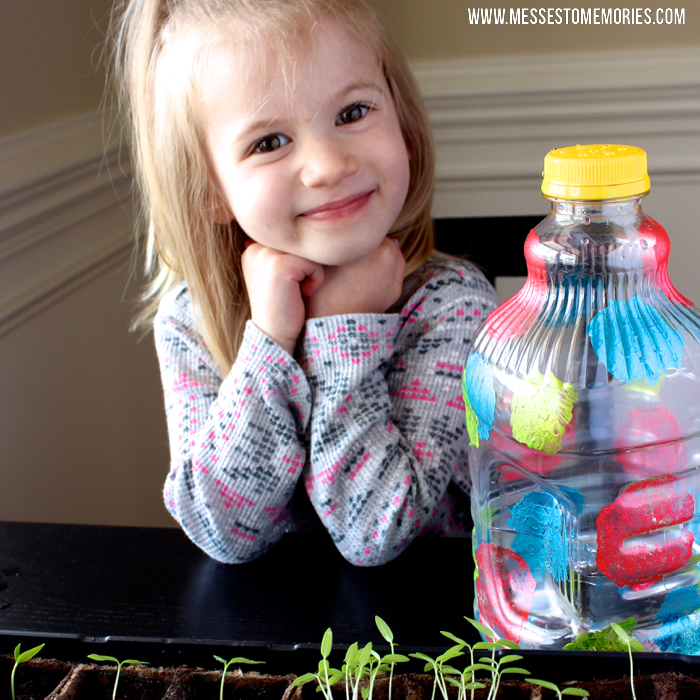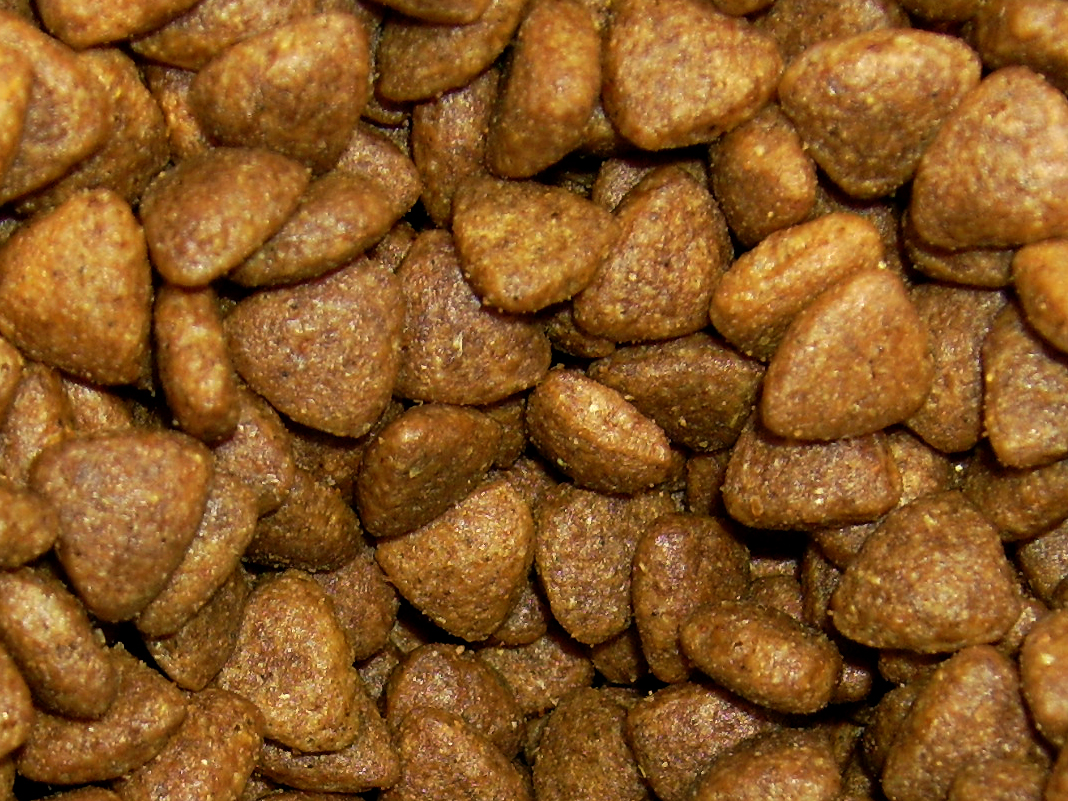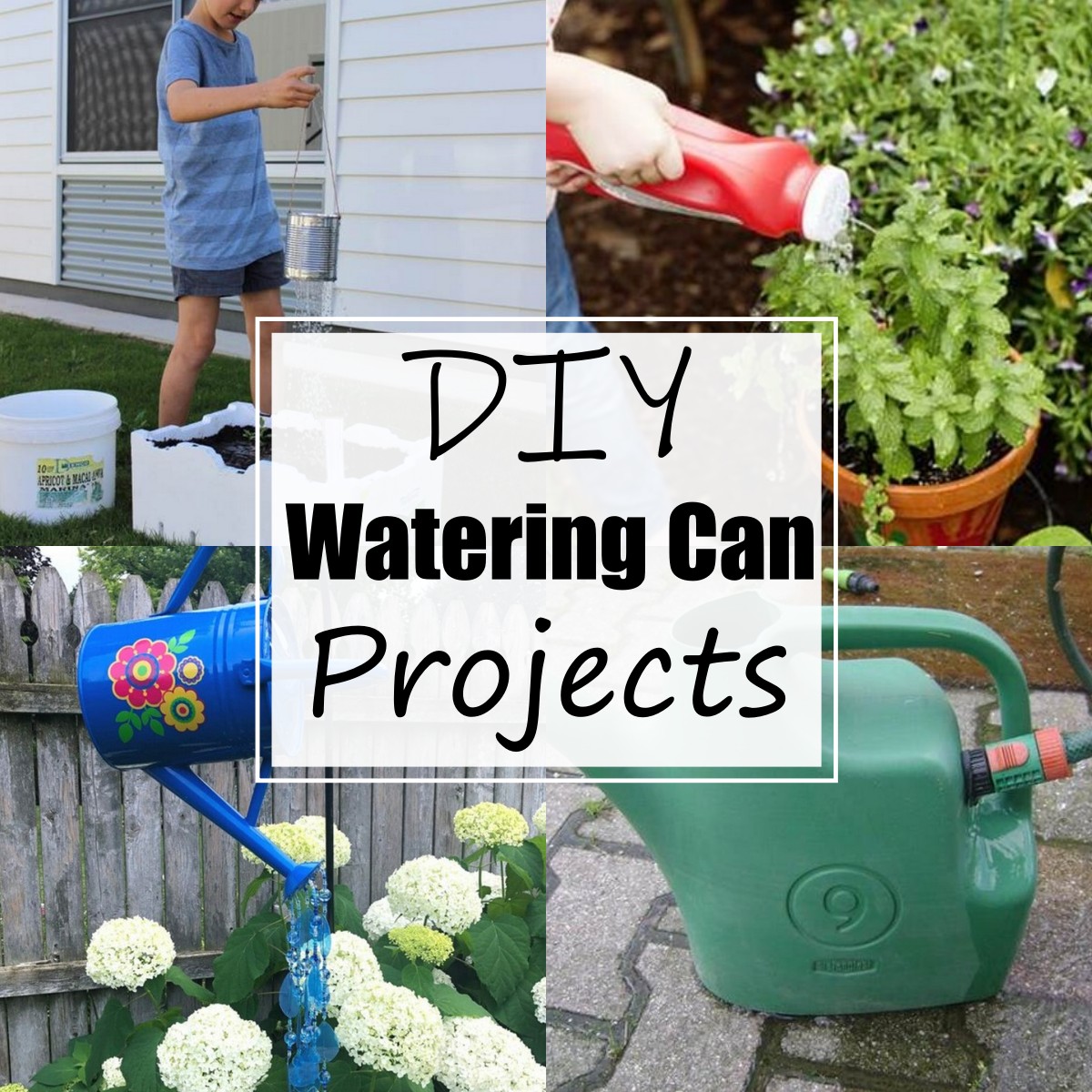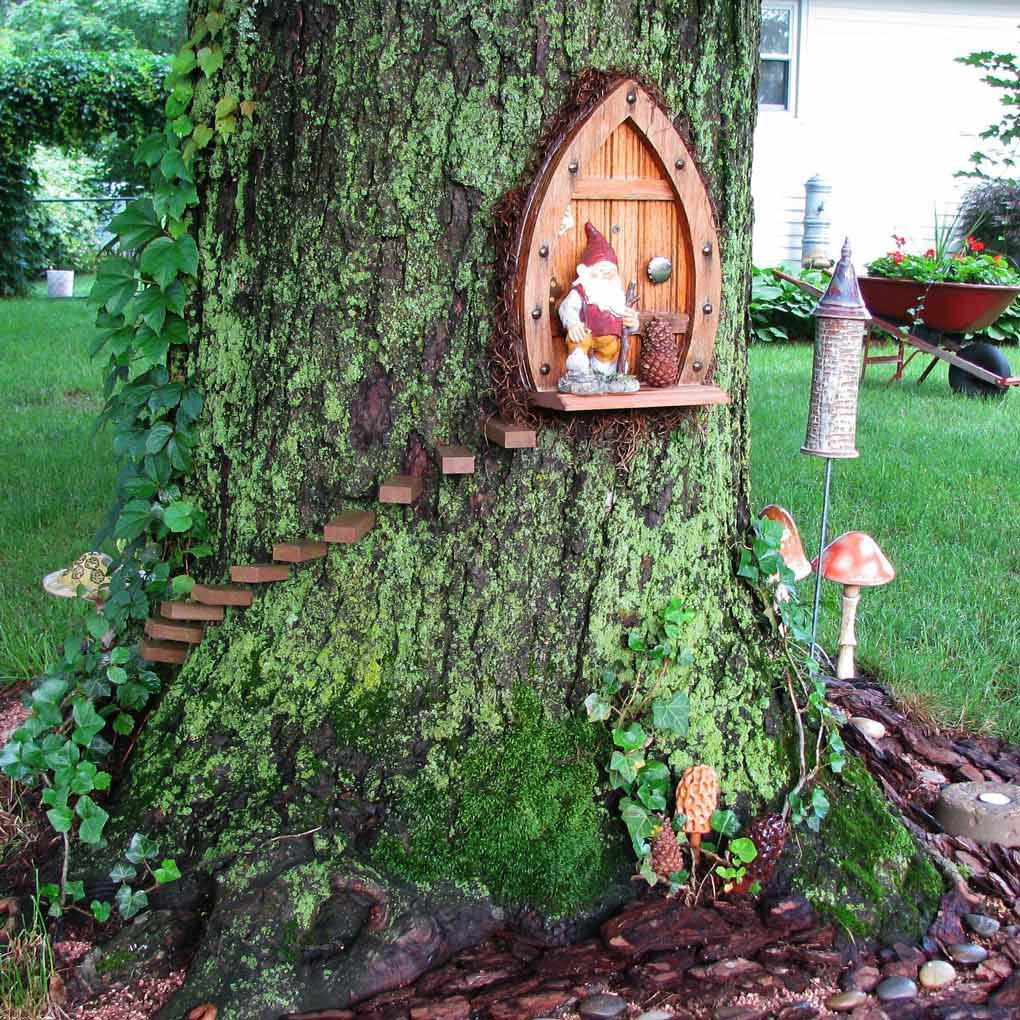DIY Fairy Garden: Create a Magical Miniature World invites you to embark on a whimsical journey, transforming your backyard or patio into an enchanting haven for tiny creatures. This guide will lead you through the steps of designing, building, and decorating your own fairy garden, fostering a connection with nature and igniting your imagination.
Fairy gardens are miniature worlds designed to inspire wonder and foster creativity. These enchanting landscapes are perfect for those seeking a peaceful retreat, a unique gardening experience, or a delightful way to engage children in the beauty of nature.
Introduction to Fairy Gardens
Fairy gardens are miniature, whimsical landscapes designed to resemble the magical world of fairies. These charming creations are typically housed in containers, such as pots, troughs, or even old teacups, and are filled with miniature plants, figurines, and other decorative elements.
Fairy gardens have become increasingly popular in recent years, offering a delightful way to bring a touch of enchantment to any outdoor space.
The History and Origins of Fairy Gardens
The concept of fairy gardens has roots in folklore and mythology, where fairies were believed to inhabit gardens and forests. Over time, these tales inspired the creation of miniature gardens that were designed to attract and provide homes for these mythical creatures.
The popularity of fairy gardens surged in the Victorian era, when gardening became a popular pastime among the upper classes. During this period, people began to create elaborate miniature gardens, often featuring tiny houses, bridges, and other intricate details.
The Victorian era saw a revival of interest in fairy gardens, with the rise of the “fairy garden movement” in the late 19th and early 20th centuries. This movement encouraged people to create miniature gardens as a way to connect with nature and to foster a sense of wonder and imagination.
The Appeal of Fairy Gardens
Fairy gardens appeal to people of all ages, offering a variety of benefits:
- A Creative Outlet: Fairy gardens provide a canvas for creativity, allowing individuals to express their artistic vision through the selection of plants, figurines, and other decorative elements.
- A Sense of Wonder: The miniature scale and whimsical details of fairy gardens evoke a sense of wonder and imagination, transporting viewers to a world of enchantment and magic.
- Stress Relief: The act of creating and tending to a fairy garden can be a relaxing and therapeutic experience, providing a welcome escape from the stresses of everyday life.
- Connection with Nature: Fairy gardens offer a way to connect with nature in a small and manageable way, bringing the beauty of the outdoors indoors or into a small outdoor space.
Planning Your Fairy Garden: Diy Fairy Garden
Before you start gathering supplies and planting, it’s important to plan your fairy garden. This includes deciding on the type of garden you want, choosing the right location, and gathering the necessary tools and materials.
Types of Fairy Gardens
Fairy gardens can come in all shapes and sizes. The most common types are:
- Container gardens: These are fairy gardens that are created in containers such as pots, planters, or even old teacups. They are a great option for small spaces or for those who want to create a portable fairy garden.
- Ground gardens: These are fairy gardens that are created directly in the ground. They can be any size and shape, and they offer more flexibility in terms of plant selection.
- Theme gardens: These fairy gardens are designed around a specific theme, such as a forest, a beach, or a magical garden.
Choosing the Right Location
The location of your fairy garden will depend on the type of garden you are creating and the amount of sunlight you have available. Here are some factors to consider:
- Sunlight: Most fairy garden plants need at least 4 hours of sunlight per day. Consider the amount of sunlight your chosen location receives throughout the day.
- Drainage: Make sure the location has good drainage to prevent waterlogging.
- Accessibility: Choose a location that is easy to access for watering and maintenance.
Essential Tools and Materials
Here are some essential tools and materials you will need to create your fairy garden:
- Container: If you are creating a container garden, you will need a container that is the right size for your plants.
- Soil: Choose a well-draining potting mix that is specifically designed for container gardening.
- Plants: Select miniature plants that are suitable for your chosen location and the type of garden you are creating.
- Decorations: This is where you can let your creativity shine! Use miniature furniture, figurines, rocks, moss, and other decorative elements to create a magical fairy garden.
- Watering can: A small watering can will be helpful for watering your fairy garden.
- Gardening gloves: Protect your hands while working in your fairy garden.
Designing Your Fairy Garden
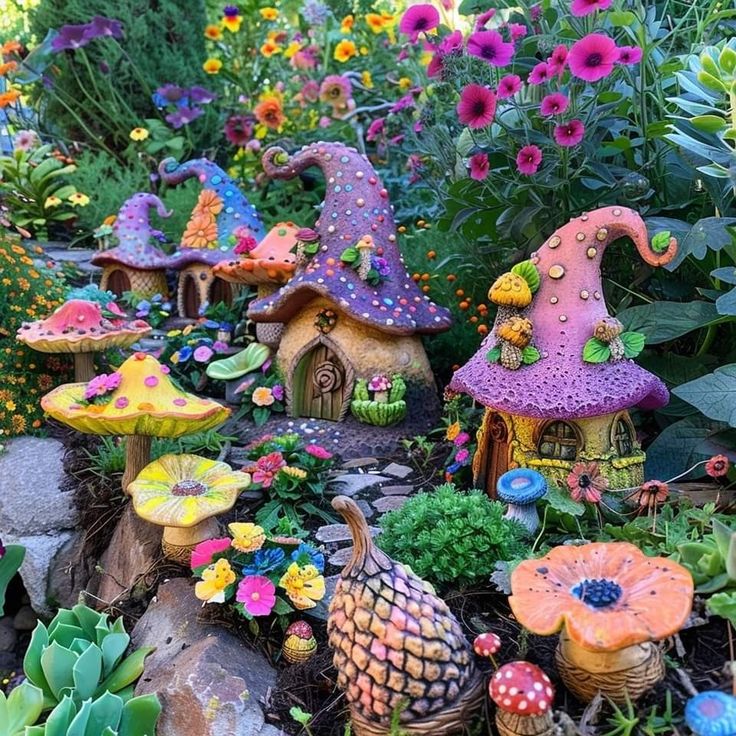
Creating a fairy garden is a delightful way to unleash your creativity and bring a touch of magic to your outdoor space. The design possibilities are endless, allowing you to craft a miniature world filled with wonder and charm.
Fairy Garden Themes
Choosing a theme for your fairy garden can help guide your design decisions and create a cohesive look. Here are some popular fairy garden themes:
- Woodland: This theme evokes a sense of natural beauty and tranquility. Use natural materials like bark, moss, and twigs to create a rustic feel. Add miniature mushrooms, toadstools, and woodland creatures to enhance the ambiance.
- Garden: This theme is perfect for incorporating vibrant flowers and lush greenery. Plant miniature versions of your favorite flowers and add small garden accessories like watering cans, wheelbarrows, and birdhouses.
- Magical: Unleash your imagination with this theme. Create a whimsical and enchanting atmosphere with shimmering lights, colorful crystals, and magical creatures like unicorns and dragons.
Fairy Garden Layouts and Designs
Once you’ve chosen a theme, it’s time to plan your fairy garden layout. Consider the size and shape of your garden space and how you want to arrange the elements.
- Circular Layout: This layout creates a sense of unity and harmony. Arrange your plants and accessories in a circular pattern, using a small pot or container as the centerpiece.
- Linear Layout: This layout is perfect for long, narrow spaces. Arrange your plants and accessories in a straight line, creating a sense of movement and direction.
- Layered Layout: This layout adds depth and dimension to your fairy garden. Create different levels using rocks, logs, or miniature furniture to create a sense of perspective.
Fairy Garden Accessories
Fairy garden accessories are essential for adding charm and personality to your miniature world. Here are some popular accessories:
- Fairy Houses: These miniature houses provide a home for your fairies and add a touch of whimsy to your garden. You can find a variety of fairy houses made from different materials, such as wood, metal, and ceramic.
- Miniature Furniture: Add a touch of realism to your fairy garden with miniature furniture like tables, chairs, beds, and swings. These items can be made from a variety of materials, including wood, plastic, and metal.
- Fairy Figurines: Fairy figurines add a touch of magic and enchantment to your garden. You can find a wide variety of fairies, gnomes, and other magical creatures.
Building Your Fairy Garden
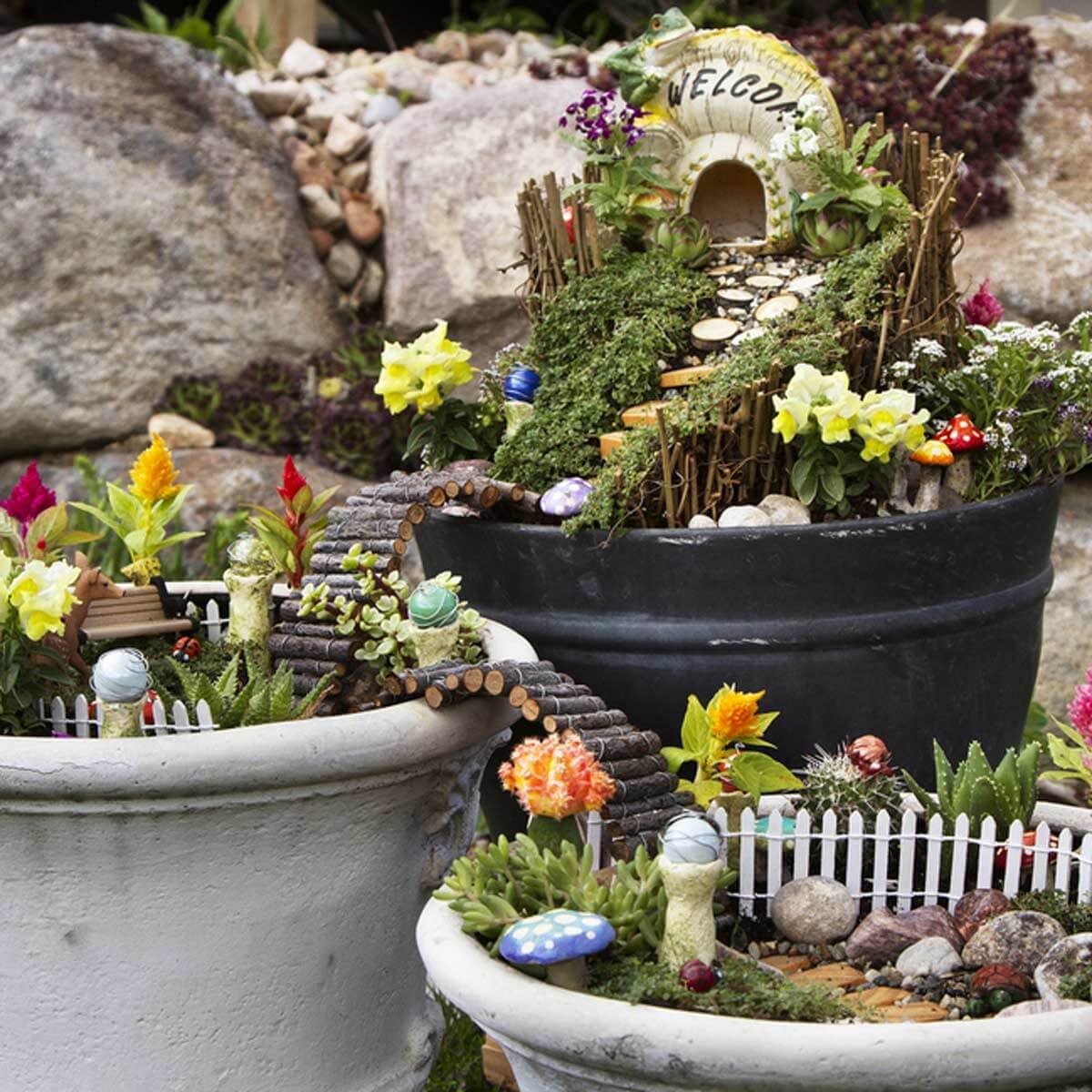
Now that you have a plan, it’s time to bring your fairy garden to life! This section will guide you through the process of creating a miniature wonderland.
Choosing the Right Plants
Selecting the right plants is crucial for a thriving fairy garden. They should be small, slow-growing, and able to tolerate the conditions of your chosen location.
- Succulents: These water-wise plants are ideal for fairy gardens as they require minimal watering. Popular choices include sedums, echeverias, and sempervivums.
- Mosses: Mosses add a lush, green texture to your fairy garden. They prefer shady, moist conditions and can be easily propagated from cuttings.
- Miniature Ferns: These delicate ferns create a woodland feel. They thrive in shady, humid environments and can be found in a variety of sizes.
- Dwarf Conifers: These miniature evergreen trees add structure and year-round interest to your fairy garden. Popular options include dwarf pines, spruces, and firs.
Creating a Miniature Landscape
Once you have your plants, it’s time to create a miniature landscape.
- Base: Start with a base for your fairy garden. This can be a container, a wooden tray, or even a section of your garden. If using a container, make sure it has drainage holes.
- Soil: Use a well-draining potting mix that is suitable for the plants you have chosen.
- Rocks: Rocks and stones can be used to create pathways, hills, and waterfalls. They also provide a natural habitat for insects and other small creatures.
- Moss: Moss can be used to create a soft, green groundcover. It can also be used to cover rocks and create a more natural look.
- Other Natural Elements: You can also use other natural elements to add interest to your fairy garden, such as driftwood, pinecones, and small branches.
Step-by-Step Guide to Building Your Fairy Garden
Here’s a step-by-step guide to building your fairy garden:
- Choose a location: Select a spot that receives adequate sunlight for your chosen plants. Consider factors like drainage and accessibility.
- Prepare the base: If using a container, clean it thoroughly and add drainage material like gravel or pebbles. For a garden bed, remove weeds and loosen the soil.
- Add soil: Fill the base with potting mix, leaving a few inches of space at the top for planting.
- Plant your plants: Gently remove the plants from their pots and place them in the soil, ensuring they are at the same depth as they were in their pots. Water them thoroughly.
- Create a miniature landscape: Use rocks, moss, and other natural elements to create hills, pathways, and other features.
- Add accessories: Once your miniature landscape is complete, you can add accessories like fairy houses, furniture, and figurines.
- Maintain your fairy garden: Water your plants regularly, fertilize them as needed, and remove any weeds or dead plants. Enjoy your miniature wonderland!
Decorating Your Fairy Garden
Now that you have built your fairy garden, it’s time to add the finishing touches that will bring it to life. This is where your creativity can truly shine! From miniature furniture to enchanting lighting, there are countless ways to decorate your fairy garden and create a magical world for your tiny residents.
Miniature Furniture and Accessories
Adding miniature furniture and accessories to your fairy garden will instantly enhance its charm and create a sense of realism. You can find an extensive range of miniature items, from tiny tables and chairs to miniature swings, hammocks, and even miniature tea sets. These items are often made from a variety of materials, including wood, plastic, and metal.
- Furniture: Consider adding a miniature table and chairs for your fairies to enjoy their meals or tea parties. You can also include a tiny bed, a miniature bookshelf, or a cozy armchair for their relaxation.
- Accessories: Miniature lanterns, flower pots, and even tiny garden tools can add a touch of whimsy to your fairy garden. Don’t forget to include a miniature watering can or a miniature birdhouse to complete the scene.
- Figurines: Miniature fairies, animals, and other magical creatures will bring life and personality to your fairy garden. You can find figurines made from a variety of materials, such as porcelain, resin, and wood.
Creating Pathways and Walkways
Pathways and walkways add structure and visual interest to your fairy garden, guiding visitors through the miniature landscape. You can create these pathways using a variety of materials, such as pebbles, moss, or even miniature stones.
- Pebble Pathways: Use small pebbles or gravel to create simple and charming pathways. You can arrange them in straight lines or create winding paths to add a touch of whimsy.
- Moss Pathways: Moss is a beautiful and natural material that can be used to create soft and inviting pathways. Simply spread a layer of moss over the desired area and gently press it down.
- Miniature Stone Walkways: Miniature stones, available at craft stores or online, can be used to create elegant and detailed pathways. You can arrange them in patterns or create a meandering path that winds through your fairy garden.
Adding Lighting and Water Features
Lighting and water features can add a magical touch to your fairy garden, creating a sense of wonder and enchantment.
- Fairy Lights: Tiny LED fairy lights are perfect for illuminating your fairy garden at night. You can wrap them around trees, shrubs, or even place them along pathways to create a magical glow.
- Solar Powered Lights: Solar powered lights are a convenient and eco-friendly option for lighting your fairy garden. They charge during the day and automatically turn on at dusk, providing a gentle glow throughout the night.
- Miniature Water Features: Miniature fountains, ponds, or even a small waterfall can add a soothing sound and visual appeal to your fairy garden. You can find a variety of miniature water features at garden centers or online.
Maintaining Your Fairy Garden
Just like any other garden, your fairy garden needs regular care and attention to thrive. Maintaining your fairy garden is crucial for its longevity and aesthetic appeal.
Caring for Fairy Garden Plants
The key to a flourishing fairy garden is ensuring your miniature plants receive the right care. Here are some tips:
- Watering: Fairy garden plants are typically small and require frequent watering, especially during dry spells. Use a watering can with a fine rose to gently water the soil, avoiding overwatering, which can lead to root rot.
- Sunlight: Most fairy garden plants prefer partial shade, but it’s important to research the specific light requirements of your chosen plants. Too much direct sunlight can scorch delicate leaves.
- Fertilizer: Use a diluted liquid fertilizer specifically formulated for miniature plants to provide essential nutrients. Avoid over-fertilizing, which can harm the roots.
- Pruning: Regular pruning helps maintain the shape and size of your fairy garden plants. Trim away any dead or overgrown foliage to encourage new growth.
Protecting Your Fairy Garden from Pests and Diseases
Fairy gardens are susceptible to pests and diseases just like any other garden. Taking preventative measures is crucial to keep your garden healthy.
- Inspect Regularly: Regularly inspect your fairy garden for signs of pests, such as aphids, spider mites, or mealybugs. Look for any unusual discoloration or wilting of plants.
- Natural Pest Control: Use natural pest control methods like insecticidal soap or neem oil to deter pests. These solutions are safe for your plants and beneficial insects.
- Disease Prevention: Ensure proper drainage to prevent fungal diseases. Avoid overwatering and provide adequate air circulation to minimize the risk of disease.
Maintaining the Overall Appearance of Your Fairy Garden
Maintaining the overall appearance of your fairy garden is important for its aesthetic appeal.
- Weeding: Regularly remove weeds to prevent them from competing with your miniature plants for nutrients and space.
- Mulching: Apply a layer of mulch, such as shredded bark or pebbles, to help retain moisture, suppress weeds, and enhance the visual appeal of your fairy garden.
- Repairs and Replacements: Regularly check for any damage to your fairy garden structures, such as miniature houses, fences, or bridges. Repair or replace any damaged items as needed.
Fairy Garden Inspiration
Inspiration is the key to creating a magical fairy garden. Seeing examples of others’ creations can spark your own imagination and give you ideas for your own fairy garden.
Fairy Garden Examples
Many inspiring fairy gardens can be found online and in person. Here are some examples of fairy gardens from around the world:
- A fairy garden created in a vintage teacup, with miniature furniture, a tiny swing, and a miniature flowerpot.
- A fairy garden nestled in a hollowed-out tree stump, complete with a tiny bridge, a miniature waterfall, and a fairy house made of twigs and moss.
- A fairy garden built in a large planter, featuring a winding path, a miniature pond, and a variety of miniature plants and flowers.
Fairy Garden Themes
Fairy gardens can be themed around various ideas, allowing you to personalize them and create a unique experience. Here is a table that illustrates some popular themes:
| Theme | Materials | Design Elements | Inspiration |
|---|---|---|---|
| Enchanted Forest | Twigs, moss, stones, miniature trees | Winding paths, miniature waterfalls, fairy houses made of natural materials | Classic fairy tales, woodland creatures |
| Cottage Garden | Miniature flowers, herbs, vegetables, vintage teacups | Tiny fences, miniature benches, birdhouses, picket fences | English gardens, cottagecore aesthetic |
| Seashore Garden | Seashells, pebbles, driftwood, miniature boats | Tiny lighthouses, miniature beach chairs, miniature crabs and sea creatures | Ocean views, seaside towns |
| Fantasy Garden | Unicorns, dragons, mythical creatures, colorful flowers | Rainbow bridges, miniature castles, magical creatures | Fantasy novels, movies, and games |
Fairy Garden Resources
There are numerous resources available to help you find inspiration for your fairy garden:
- Online: Websites like Pinterest, Instagram, and YouTube are excellent sources of inspiration. Search for s like “fairy garden,” “miniature garden,” or “fairy garden ideas.”
- Books: There are many books available on fairy gardens, offering ideas, tips, and techniques. Search for books on Amazon or at your local library.
- Blogs: Many bloggers specialize in fairy gardens, sharing their creations and insights. Look for blogs on topics like gardening, crafts, and DIY.
- Fairy Garden Communities: Online forums and social media groups dedicated to fairy gardens can provide a platform to connect with other enthusiasts, share ideas, and seek inspiration.
Fairy Garden Activities
A fairy garden is not just a beautiful display; it’s an invitation to engage with nature and spark your imagination. With a little creativity, you can turn your fairy garden into a platform for fun activities, educational opportunities, and memorable moments.
Fairy Garden Storytelling
Storytelling is a wonderful way to bring your fairy garden to life. You can create your own fairy tales based on the characters and elements in your garden. For instance, a miniature house could be the home of a tiny family, and a toadstool could be a magical portal to another world. Encourage children to use their imaginations to create stories about the inhabitants of their fairy gardens.
Fairy Garden Photography
Fairy gardens are perfect for capturing whimsical and enchanting photos. You can use a macro lens to get close-up shots of tiny details, or use a wide-angle lens to capture the overall scene. Encourage children to experiment with different angles and perspectives to find unique and creative shots. You can even create a fairy garden photo album or share your photos online.
Nature Walks
Your fairy garden can be a starting point for exploring the natural world. Encourage children to go on nature walks in their backyard or local park, looking for plants, insects, and other creatures that might inspire their fairy garden creations. They can also collect natural materials like leaves, twigs, and stones to add to their garden.
Fairy Garden-Themed Party
A fairy garden-themed party can be a fun and magical way to celebrate a birthday, holiday, or any special occasion. You can decorate your party space with fairy lights, flowers, and other fairy garden elements. You can also have fairy-themed activities like face painting, crafts, and games. Encourage children to dress up as fairies or other magical creatures.
Fairy Garden as a Teaching Tool
Fairy gardens can be a fun and engaging way to teach children about plants, insects, and other aspects of nature. You can use your fairy garden to introduce children to the concept of ecosystems, the importance of biodiversity, and the role of humans in the environment. Encourage children to observe the plants and creatures in their fairy garden and learn about their life cycles and interactions.
Fairy Garden Crafts
Creating your own fairy garden accessories and decorations is a delightful way to personalize your miniature world. You can use recycled materials, natural elements, and your imagination to build charming miniature furniture, houses, and other structures, and to create unique fairy garden art and crafts.
Building Miniature Furniture
Building miniature furniture is a fun and rewarding way to furnish your fairy garden. You can use a variety of materials, such as wood, cardboard, and even twigs and leaves. Here are some ideas for building miniature furniture:
- Chairs and Tables: Use toothpicks or thin twigs for legs and small pieces of cardboard or wood for the seats and tops. You can even use small bottle caps for tabletops.
- Beds: Create a miniature bed frame from toothpicks or twigs and use a small piece of fabric or felt for the mattress.
- Benches: Cut a small piece of wood or cardboard and use toothpicks or twigs for legs. You can add a cushion by gluing a small piece of felt or fabric to the top.
Building Miniature Houses
Miniature houses are a delightful addition to any fairy garden. You can use a variety of materials to build your own miniature houses, such as:
- Cardboard Boxes: Cut and shape cardboard boxes to create the walls and roof of your house. You can add details such as windows and doors using paper or felt.
- Wood: Small pieces of wood can be used to build the frame of a miniature house. You can use glue or nails to assemble the pieces.
- Clay: You can use clay to mold the walls and roof of your miniature house. Allow the clay to dry completely before painting or decorating.
Creating Fairy Garden Art and Crafts
There are endless possibilities for creating fairy garden art and crafts. Here are some ideas:
- Fairy Doors: Cut a small piece of wood or cardboard to create the door shape. You can paint or decorate the door with details such as a knocker, a mailbox, or a welcome mat.
- Fairy Bridges: Use twigs or small pieces of wood to create a bridge over a small stream or path in your fairy garden.
- Fairy Lanterns: Use small glass jars or teacups and decorate them with paint, glitter, and other embellishments. You can add a small tea light inside to create a magical glow.
- Fairy Statues: Use small figurines or even create your own statues from clay or polymer clay.
Fairy Garden Resources
Finding the right resources can make creating your fairy garden a breeze. Whether you’re looking for supplies, inspiration, or expert advice, there are plenty of online and offline resources available to help you build your dream fairy garden.
Online Resources for Fairy Garden Supplies
Online retailers offer a wide variety of fairy garden supplies, from miniature furniture and accessories to plants and tools. Here are a few popular options:
- Etsy: This marketplace features handcrafted and unique fairy garden supplies from independent artists and sellers worldwide.
- Amazon: Amazon offers a vast selection of fairy garden supplies, including everything from miniature houses and furniture to plants and tools.
- Fairy Garden Direct: This website specializes in fairy garden supplies and offers a wide range of products, including miniature houses, furniture, accessories, and plants.
- The Fairy Garden Company: This website offers a variety of fairy garden supplies, including miniature houses, furniture, accessories, and plants.
Online Resources for Fairy Garden Inspiration
There are numerous online resources available to inspire your fairy garden creations. These resources can help you find ideas for themes, designs, and decorations.
- Pinterest: This website is a great source of inspiration for fairy gardens. You can find countless images and ideas for different themes, designs, and decorations.
- Instagram: Use hashtags like #fairygarden, #miniaturegarden, and #fairygardening to find inspiration from other fairy garden enthusiasts.
- Fairy Garden Blogs: Many blogs are dedicated to fairy gardens, offering tips, advice, and inspiration for creating your own miniature world.
- YouTube: You can find numerous videos on YouTube showcasing fairy garden designs, DIY projects, and tutorials.
Online Resources for Fairy Garden Information
If you’re looking for more information about fairy gardens, there are many online resources available.
- Fairy Garden Websites: Websites dedicated to fairy gardens offer articles, tutorials, and information about everything from planning and designing to decorating and maintaining your fairy garden.
- Online Forums: Online forums are a great place to connect with other fairy garden enthusiasts and ask questions about your project.
- Gardening Websites: Many gardening websites offer information about plants suitable for fairy gardens and how to care for them.
Fairy Garden Books and Magazines
Books and magazines can provide valuable information and inspiration for your fairy garden.
- “The Complete Book of Fairy Gardens” by Kathy and Dave Whaley: This book covers everything from planning and designing to decorating and maintaining your fairy garden.
- “Fairy Gardens: A Guide to Creating Your Own Miniature World” by Kim Eierman: This book offers step-by-step instructions and inspiration for creating your own fairy garden.
- “Fairy Gardens: A Magical World in Miniature” by Kathy and Dave Whaley: This book features stunning photographs and creative ideas for fairy gardens.
- “Fairy Gardens: Create a Miniature World” by Debbie King: This book provides detailed instructions and inspiration for creating your own fairy garden.
Online Retailers for Fairy Garden Supplies, Diy fairy garden
| Retailer | Fairy Garden Supplies | Books | Other Resources |
|---|---|---|---|
| Etsy | Yes | Yes | Yes |
| Amazon | Yes | Yes | Yes |
| Fairy Garden Direct | Yes | Yes | Yes |
| The Fairy Garden Company | Yes | Yes | Yes |
Epilogue
As you create your fairy garden, remember that the possibilities are endless. Embrace your creativity, explore different themes, and let your imagination run wild. Your DIY fairy garden will become a cherished space for relaxation, contemplation, and the joy of creating something truly magical.
Creating a DIY fairy garden is a delightful way to bring a touch of magic to your home. Adding a whimsical touch can be as simple as making miniature furniture from twigs and leaves, or you can get more elaborate and create tiny ponds and bridges.
To add a bit of extra sparkle, you can even incorporate some slime into your fairy garden. Why not try making your own slime using this simple recipe make your own slime to create a gooey, shimmering path for your fairies to wander.
The possibilities are endless when it comes to DIY fairy gardens, so let your imagination run wild and create a miniature world that’s truly magical.

